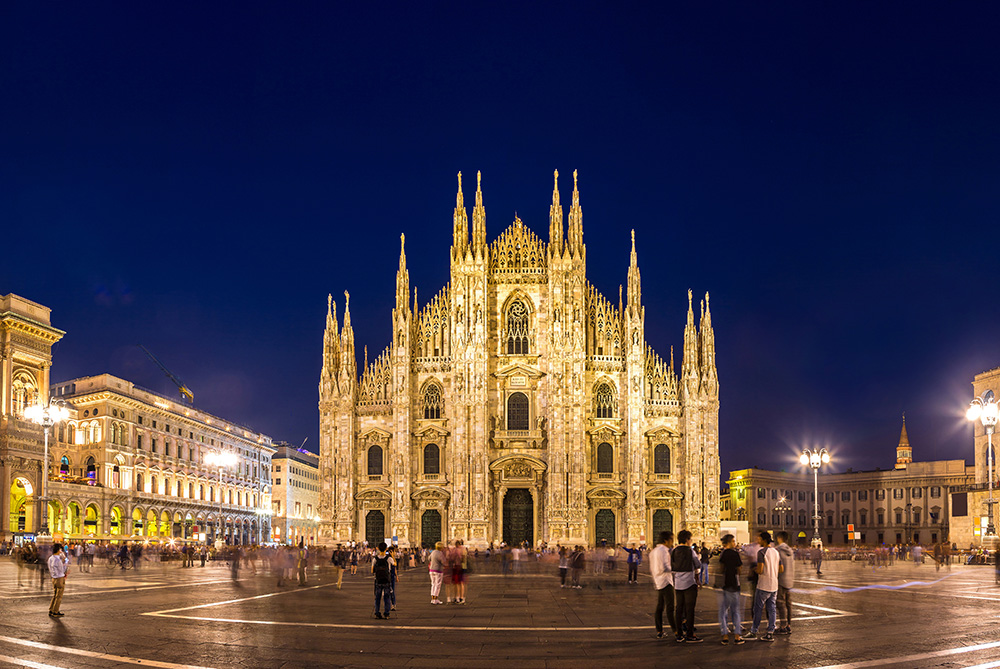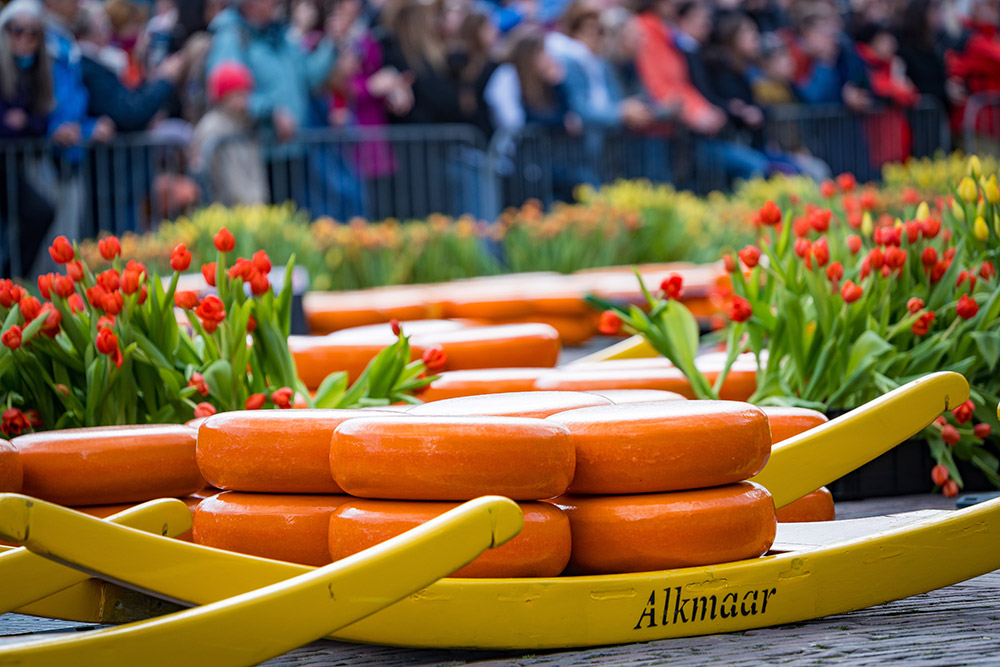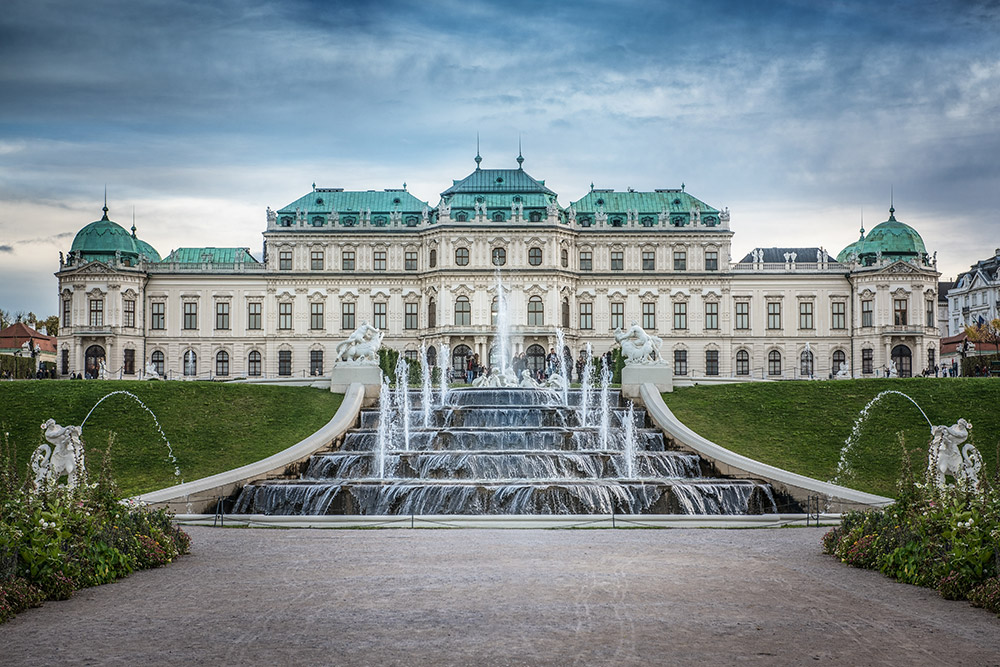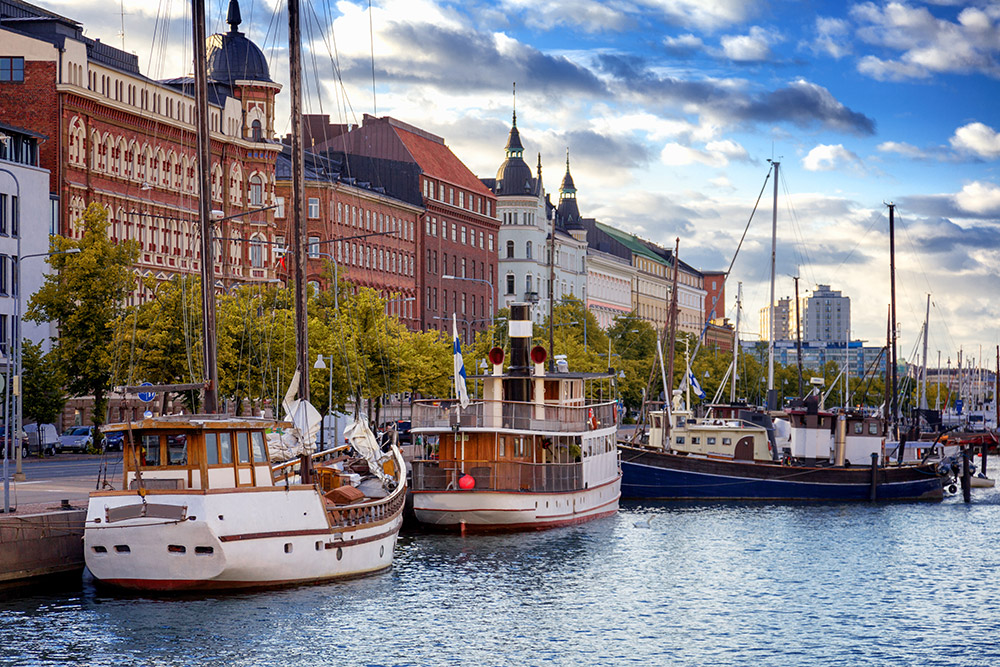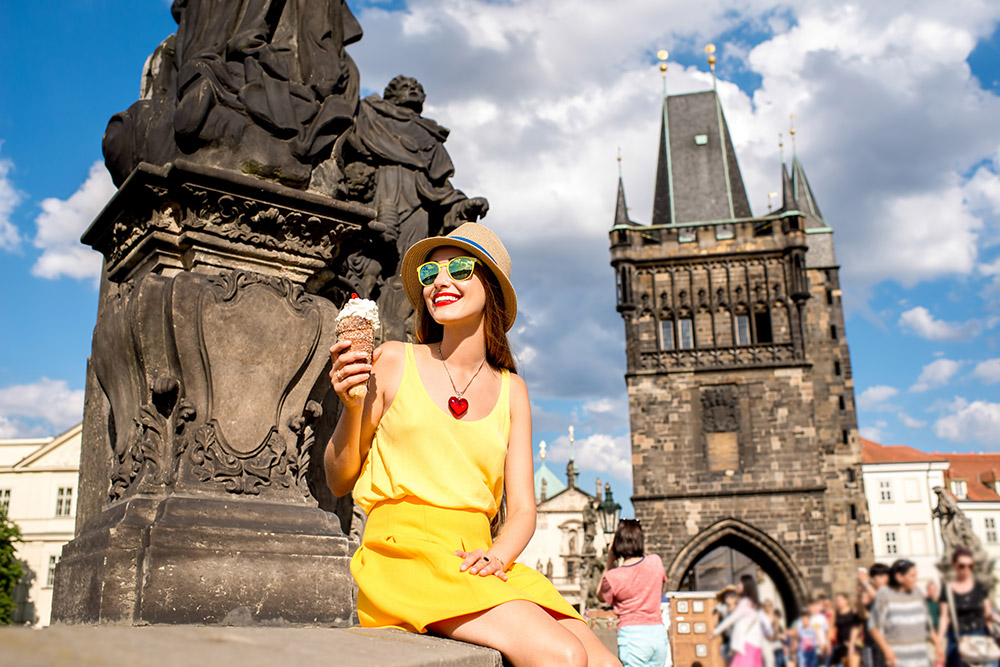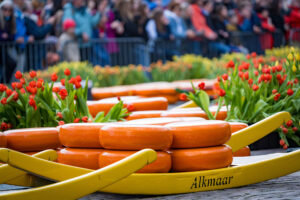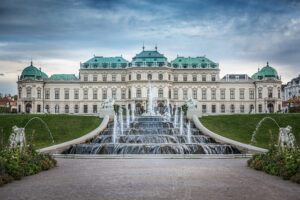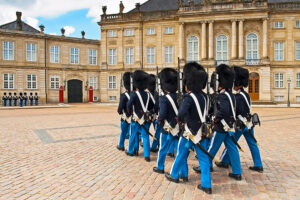Embark on a 7 to 10-day adventure to Northeastern Italy, exploring Lombardy, Veneto, and Friuli-Venezia Giulia, and immerse yourself in the enchanting and music-filled destinations that make this region uniquely delightful. We’ve compiled a proposed itinerary for your journey that begins and ends at Milan’s airport, covering a circular route of approximately 497 miles.
Popular itinerary in Northeastern Italy:
Days 1 and 2
We’ll start in Milan, a vibrant and cosmopolitan city with a rich history and an abundance of tourist attractions. We recommend a walking route of just over 3 miles to capture many of Milan’s not-to-be-missed highlights:
Begin your journey by parking your car near Castello Sforzesco, an impressive 15th century fortress that once served as the residence of the ruling Sforza family. Today, it houses several museums, and its expansive courtyards make it an extraordinary sight. Explore the Museum of Musical Instruments of Milan within the castle, exhibiting over 700 musical instruments from the 15th to the 20th century, with a special focus on Lombardian instruments. The diverse collection includes string instruments, violins, horns, various wooden instruments like flutes, oboes, clarinets, and English horns, as well as brass instruments, a piano, and some ancient bagpipes. The museum also features the equipment used by Radio Milano. Afterward, head to the Church of Santa Maria delle Grazie to admire the masterpiece: Leonardo da Vinci’s “The Last Supper.” This renowned fresco depicts the iconic scene of Jesus and his disciples during the Last Supper.
The next stop is San Maurizio al Monastero Maggiore, a historic church renowned for its stunning frescoes. This church is often referred to as the “Sistine Chapel of Milan,” as it boasts magnificent Renaissance and Baroque art. The intricate decorations and religious paintings within the church highlight the city’s rich artistic heritage.
From there, head to the Duomo di Milano (the Milan Cathedral), an impressive Gothic cathedral and a Milan landmark. The cathedral has a magnificent interior and offers panoramic views of the city from its rooftop. Visit the nearby Galleria Vittorio Emanuele II, a shopping center renowned for its magnificent architecture, including a glass dome and luxurious boutiques. The gallery connects Piazza del Duomo to Piazza della Scala and the La Scala Opera House (Teatro alla Scala), inaugurated in 1778.
As a focal point for Italian opera and music, La Scala has a rich history, hosting world premieres of operas by famous composers such as Giuseppe Verdi, Giacomo Puccini, and many others. The building itself is an architectural masterpiece, known for its neoclassical style and lavish interiors. The horseshoe-shaped auditorium is famous for its excellent acoustics, providing an intimate yet splendid experience for the audience.
La Scala is known for its opera and ballet productions that attract leading artists, conductors, and directors from around the world. It presents a diverse range of performances, from traditional opera to contemporary works and ballet. The theater also houses the Museo Teatrale alla Scala, a museum showcasing the theater’s history, performances, composers, and various artifacts related to its productions. In terms of influence and legacy, La Scala is not only a prominent cultural institution in Milan; it is an iconic symbol of Italian and global opera and classical music. La Scala continues to have a significant impact on the world of performing arts.
Day 3: Cremona
Cremona, a city with a rich cultural heritage, is particularly famous for its violin-making tradition, as reflected by many of its top sites. We recommend that you explore the city’s historic center by foot to capture the highlights.
At the heart of Cremona stands its central square, Piazza del Comune, surrounded by historic buildings and the renowned bell tower, Torrazzo. The Torrazzo, one of Europe’s tallest brick towers, provides breathtaking panoramic views of the city. The nearby Cremona Cathedral (Cattedrale di Santa Maria Assunta) and Cremona Baptistery (Battistero) are architectural masterpieces.
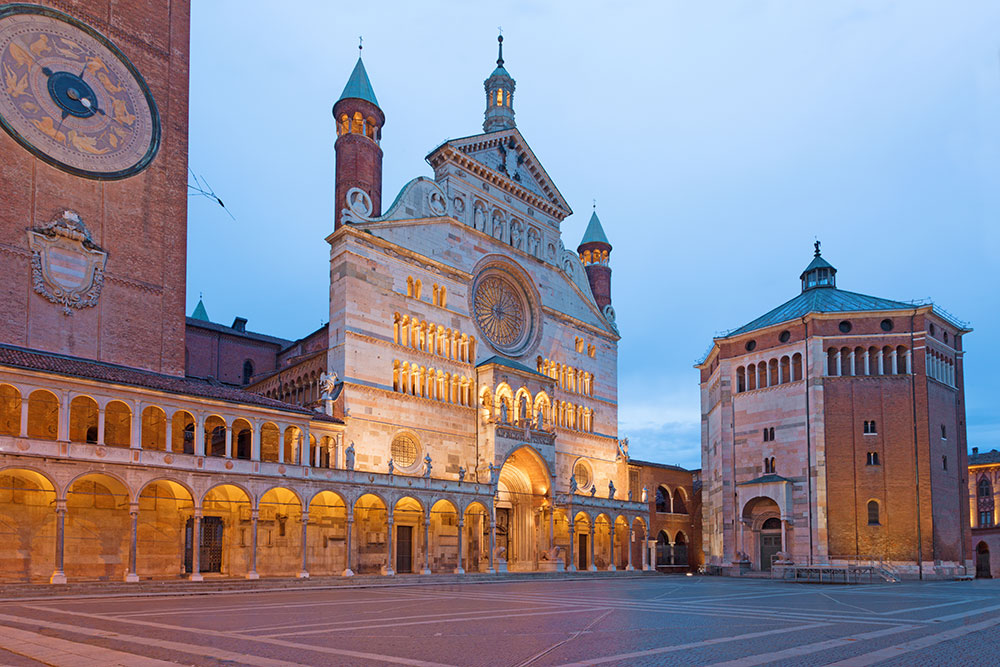
Cremona is also home to the Museo del Violino (the Violin Museum), dedicated to the city’s illustrious legacy as the birthplace of legendary violin craftsmen. This museum is a celebration of string instruments, featuring an impressive collection of violins, violas, and cellos. Through educational displays, workshops, live demonstrations, and interactive exhibitions, the museum narrates the story of the evolution of violin-making techniques, highlighting their artistry and history, and it is committed to preserving the heritage of violin making and fostering appreciation for string instruments. It influences musicians, researchers, and music enthusiasts worldwide, offering a journey into the history, art, and cultural significance of these exquisite and finely crafted instruments.
The Stradivari Museum: The Stradivari Museum is a prestigious institution dedicated to the legacy of Antonio Stradivari, one of history’s most famous violinmakers. It displays a unique collection of Stradivarius violins, violas, and cellos, providing insights into the art, techniques, and materials Stradivari used to create these iconic instruments. The museum’s informative displays, workshops, and interactive exhibitions create a platform for musicians, researchers, and enthusiasts to learn and appreciate the historical and cultural significance of Stradivari’s masterpieces. The museum preserves and promotes the art and craftsmanship that turned Stradivari’s instruments into treasures that are cherished worldwide.
For those looking for a broader musical experience in Cremona, explore the magnificent opera house, Teatro Comunale Ponchielli. The theater plays a vital role in Cremona’s musical heritage and regularly hosts a diverse array of performances by local and international artists.
Day 4: Mantua
To experience Mantua, consider parking in northern lot by the lake and stroll across the picturesque Ponte De San Giorgio Bridge to reach the historic center. Wander through the well-preserved heart of the city, with its narrow streets, charming squares, and medieval architecture.
Enjoy the grandeur of the Ducal Palace (Palazzo Ducale), a Renaissance masterpiece featuring museums, Francesco’s rooms, and beautiful courtyards. Be sure to see the Camera degli Sposi, adorned with the famous wall paintings by Andrea Mantegna.
Marvel at the architectural splendor of the Basilica di Sant’Andrea, a Renaissance gem designed by Leon Battista Alberti, celebrated for its magnificent architecture and works of art.
Admire the Teatro Bibiena, a visually striking theater from the late 18th century renowned for its exceptional acoustics. Initially dedicated to scientific and experimental performances during the Enlightenment, the theater now hosts a variety of cultural events, concerts, and theatrical performances. It is a significant cultural landmark, contributing to the city’s vibrant arts scene.
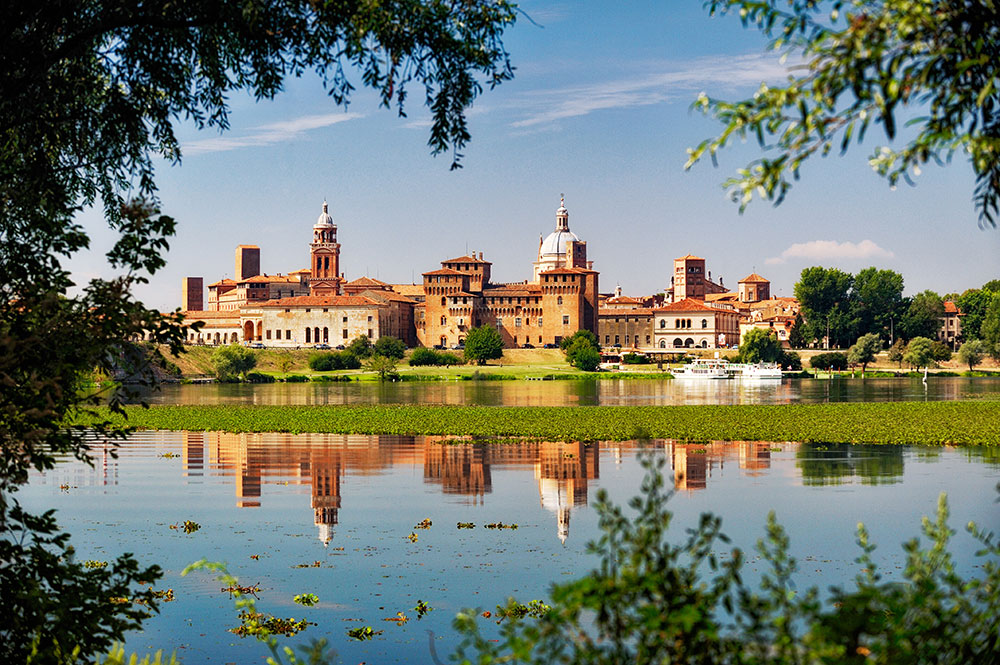
Day 5: Ferrara
Ferrara’s historical center blends stunning architecture with rich cultural heritage, making it a delightful destination for tourists interested in Italian history and art. A visit to Ferrara provides an opportunity to explore its musical history, enjoy live performances, and immerse oneself in a city that values its cultural heritage. To experience music in Ferrara, check local event listings, visit official venues like Teatro Comunale, and have a look at Ferrara Musica’s schedules to find relevant music events and performances.
Ferrara boasts additional remarkable attractions, as well, including the Romanesque-Gothic Cathedral (Cattedrale di San Giorgio) with its impressive sculptures and artwork, and the Ducal Palace at Castello Estense. This medieval fortress features excavations, historic rooms, a museum, and a dark underground dungeon with prison cells. Explore the city’s charm by walking or biking along its well-preserved city walls, offering fantastic views of the city and its surroundings.
In the afternoon, relax in the mineral-rich thermal springs of Abano Terme, renowned for their therapeutic properties and used for centuries to heal conditions like arthritis and joint inflammation. Abano Terme has a charming historical center with elegant architecture, including the cathedral and the clock tower, as well as picturesque squares and parks
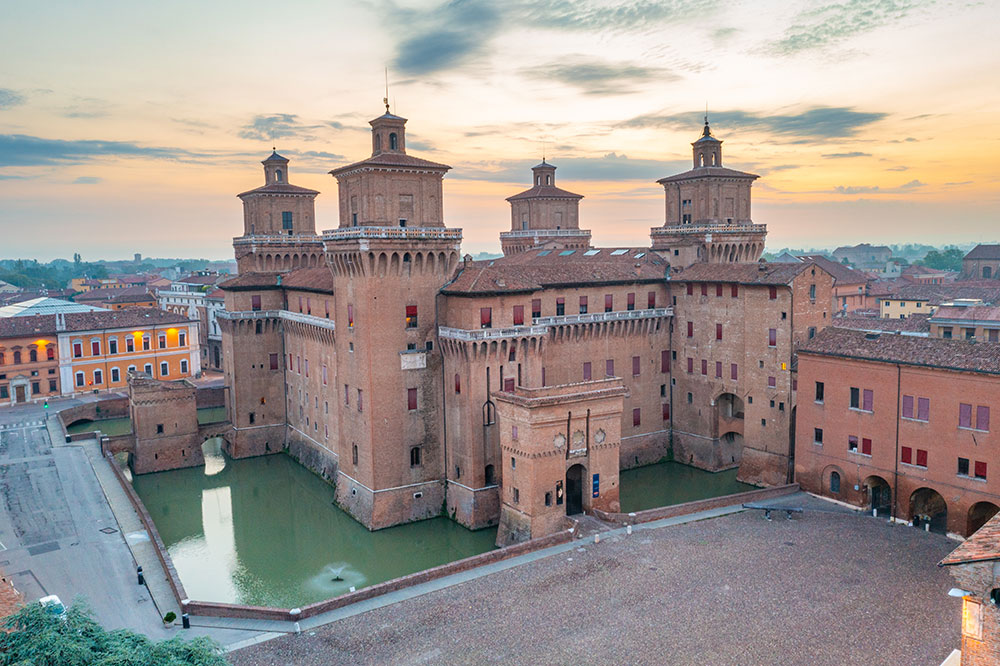
Days 6 and 7: Venice
For the two-day excursion in Venice, consider staying in one of the hotels in the neighboring town of Mestre. Use public transportation to reach Venice’s center, or choose the convenience of the Tronchetto car park. From there, embark on a leisurely walking tour or hop onto the city’s water transport lines, for a short journey to capture all the enchanting sites Venice has to offer. Beyond the iconic landmarks, many travelers relish the experience of meandering through the charming streets and canals of the city, affectionately known locally as “La Serenissima.”
Venice offers a magical experience full of history, art, and culinary delights. The Grand Canal, lined with magnificent palaces, churches, and bridges, is the city’s main waterway. A gondola ride along this scenic canal offers a truly unique Venetian experience, allowing you to marvel at the city’s beauty and waterways while soaking in the historical tales of the gondoliers.

Piazza San Marco is the heart of Venice. The square is surrounded by impressive landmarks, including St. Mark’s Basilica adorned with stunning Byzantine mosaics, and the Campanile (bell tower), offering a panoramic view of the city and the lagoon. The Doge’s Palace, an architectural marvel, served as the seat of Venetian rulers, and the Bridge of Sighs (Ponte dei Sospiri), famed for its unusual name, connected the palace to the city’s prisons.
Spanning the Grand Canal, the Rialto Bridge stands as the oldest and most famous bridge in Venice. Nearby, the bustling Rialto Market offers a lively array of fresh produce, seafood, and local products. Art enthusiasts can visit the Gallerie dell’Accademia and the Peggy Guggenheim Collection, housing impressive collections of Venetian and modern art, respectively. The Scuola Grande di San Rocco, located in the San Polo district, was established in the 15th century and is known for its history and impressive art collection.
The Santa Maria Gloriosa dei Frari church holds great historical significance in Venice. Founded in the 14th century, it boasts Gothic architecture and an impressive art collection featuring masterpieces by renowned artists such as Titian and Bellini.
To reach the picturesque island of Burano, hop on the Vaporetto waterbus, number 12. Once on the island, wander among its colorful buildings, explore charming lace shops, visit the Lace Museum, and participate in local workshops.
Venice flourished as a vibrant hub for music during the Baroque and Renaissance periods. The city was home to renowned composers such as Antonio Vivaldi, Claudio Monteverdi, and Giovanni Gabrieli. Many of these composers not only worked in Venice but also left an indelible mark on the city’s rich musical heritage. Today, the city continues in the tradition of its illustrious musical past, offering a diverse array of musical experiences, from street performances to church concerts, musical ensembles performing in different churches to international shows at the Teatro La Fenice opera house.
Day 8: Verona
We suggest that you park in one of the parking lots near Verona’s train station and start on a walking tour that includes the following attractions:
Arena di Verona: A Roman amphitheater that hosts magnificent opera productions in a historic setting.
Casa di Giulietta (House of Juliet): A literary landmark known as the setting for Shakespeare’s “Romeo and Juliet,” featuring Juliet’s balcony and a statue that attracts countless visitors.
Piazza delle Erbe and Piazza Bra: Bustling historical squares with cafes, market stalls, and historic buildings—the perfect settings to soak in the local atmosphere.
Arche Scaligere: Gothic-style tombs, adorned with marble statues, symbolizing the power of the Scaliger family.
Museo Archeologico al Teatro Romano: A museum that showcases ancient artifacts found in the region, providing insights into the area’s history.
Roman Theatre: A well-preserved Roman theater, and a UNESCO World Heritage site, offering visitors a deeper understanding of Verona’s rich Roman heritage as well as a spectacular view of the river and city towers.
Castelvecchio: A medieval castle housing an art museum with a collection of sculptures, paintings, and medieval artifacts, located within an impressive medieval fortress. Situated across from the castle is a stunning architectural bridge over the Adige River known for its elegance and design.
Day 9: Sirmione
Located on a peninsula jutting into Lake Garda, Sirmione is a charming town known for its beauty, history, and thermal baths. Rocca Scaligera, a 13th-century fortress surrounded by a moat, is one of the town’s key attractions offering panoramic views. The town’s charming streets are filled with charming shops, gelaterias, and restaurants, creating a relaxed atmosphere.
In Bergamo, a city celebrated for its rich history, stunning architecture, and scenic surroundings in Lombardy, Italy, you can park in the upper city (Città Alta) or near the funicular that goes directly to the heart of the old city. Surrounded by Venetian walls and buildings from the medieval and Renaissance periods, Bergamo features a cluster of attractions within close proximity. These include Rocca di Bergamo (the Bergamo Fortress), a medieval fortress providing panoramic views, and Basilica di Santa Maria Maggiore, a Renaissance architectural masterpiece known for its intricate and decorative facades. The Accademia Carrara art gallery exhibits an exceptional collection of Italian art, featuring works by renowned artists like Botticelli, Raphael, and Bellini.
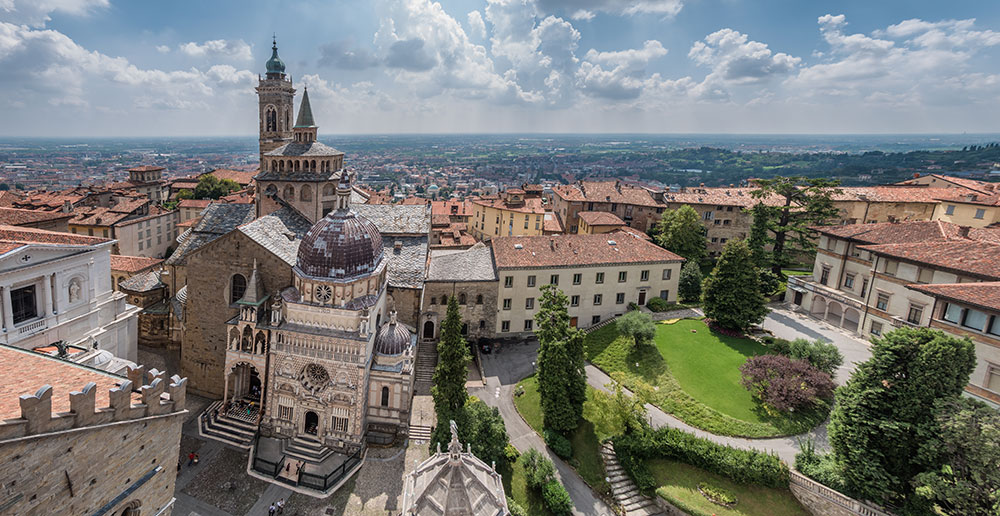
A stroll through Piazza Vecchia, with Palazzo della Ragione and its tower (Campanone), leads to Piazza del Duomo and the impressive cathedral adorned with artistic elements.
Bergamo is also home to the famous jazz festival, which draws jazz enthusiasts annually from near and far. Detailed information about the festival schedule, venues, and performers can be obtained from the official festival website.
Having immersed in the rich heritage of Baroque and Renaissance compositions, exploring the grandeur of historic opera houses, reveling in the energy of street performances, and fully engaging in the enchanting culture of this magical delightful region, our journey will conclude back in Milan.


